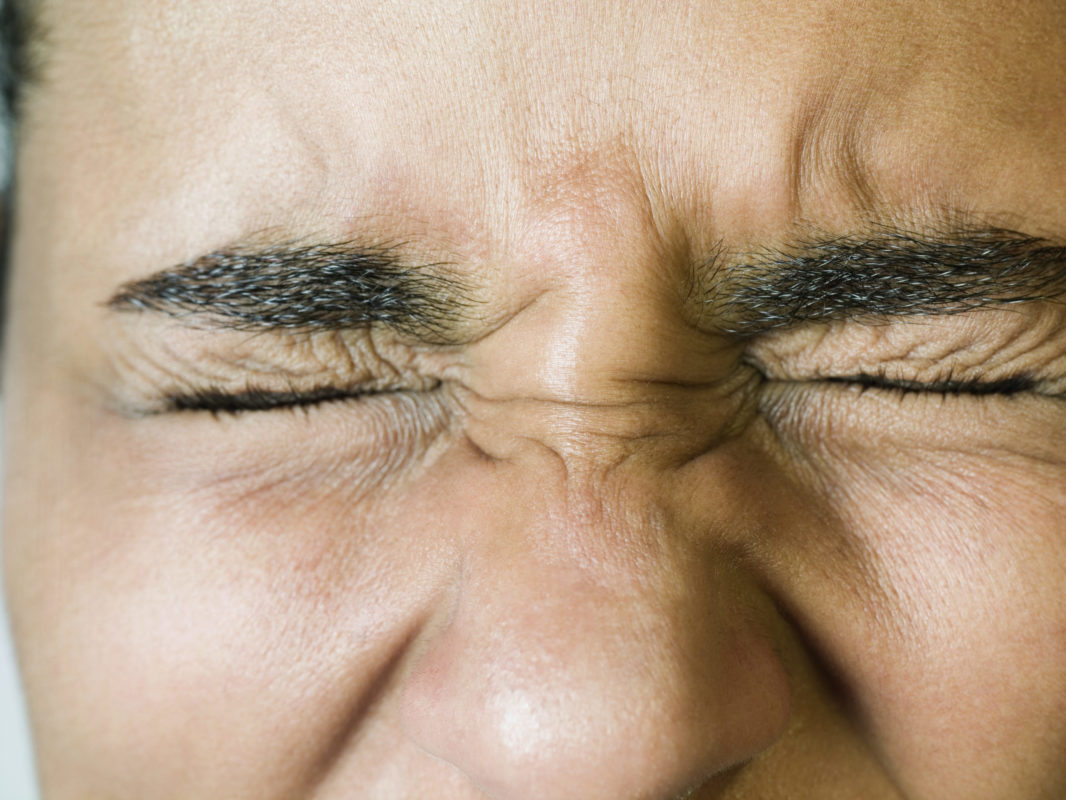How often do you blink? For adults, the average is 15-30 times per minute.
What about for babies? Now that answer might surprise you.
“Infants on average blink 2-3 times per minute!” says Dr. Cynthia Nkana, Medical Director for BlueCross BlueShield of Tennessee. “One possible reason is that, with their brand-new vision, they have to work hard to get all the visual information they need. So, they blink less.”
Blinking has many functions for babies and adults alike. Here’s everything you need to know about blinking and your health.
Why do we need to blink?
Dr. Nkana: Blinking is a reflex that’s controlled by your nerves. The orbicularis oculi muscle handles closing the eyelid, aka blinking.
Blinking has several purposes:
- To keep the eyes moist and oxygenated
- To protect the eye from dust, irritants, foreign objects and bright lights
- To clear and brighten the images received by our retina
- To lubricate and cleanse the eye by spreading tears
Dr. Nkana: Tears are composed of water, mucus and meibum (an oily substance). And they’re very important to eye health.
- Tears contain a substance called lysozyme. This has antibacterial properties and works to prevent infection. It does this by delivering white blood cells to the eye’s surface when there’s an injury.
- Tears also help to transfer oxygen from the atmosphere to the cornea. This is key since the cornea lacks blood vessels to deliver it directly. If you wear contacts, the lenses float on a layer of tears on your eye, which blinking helps replenish.
Are there any circumstances where we might blink more?
Dr. Nkana: People blink more when they are:
- Talking
- Nervous
- In pain
- Experiencing temperature changes
Excessive blinking
Dr. Nkana: If blinking interferes with your vision, life, and activities, it’s considered excessive.
Causes of excessive blinking include:
- Mental health issues (anxiety, stress)
- Fatigue
- Eye irritation
- Eye strain
- Facial tics
- Habit
- Eye dystonia, which is a movement disorder that causes painful, repetitive contractions
- Vision problems such as strabismus (crossed eyes), nearsightedness, and presbyopia
- Rare, serious neurological conditions such as multiple sclerosis, Tourette’s syndrome, Wilson’s disease, and seizure disorders in children
11 signs it’s time to see your eye doctor
Are there circumstances where you blink less?
Dr. Nkana: When you do tasks that need a lot of attention or vision, you blink less. For example, when you read or binge-watch TV, you blink 4-5 times less per minute.
Computer vision syndrome (CVS), also known as digital eye strain, is a common vision-related problem that may be caused, in part, by reduced blinking. CVS results from prolonged screen use (computer, tablet, e-reader, cell phone). And it may cause eye strain, dry eye, headache, blurred vision, and neck and shoulder pain.
Screens, blue light & eye strain: what you need to know
How are blinking problems diagnosed?
Dr. Nkana: Your ophthalmologist and/or physician can diagnose blinking problems by:
- Conducting a physical and eye exam, including an evaluation of your eye movements
- Performing a vision test to determine if you need glasses or contacts
- Using a magnifying lens to view your retina and optic nerve
When should people use eye drops?
Dr. Nkana: The type of eye drop you should use depends on your symptoms and the severity of your problem. Eye drops can range from over-the-counter (OTC) rewetting solutions for contacts to medicated versions that contain steroids, antibiotics or chemotherapy. Consult your primary care provider or eye doctor before starting any eye drops.
Common complaints where your provider may suggest using eye drops:
- Dry eyes: OTC lubricating drops, also known as artificial tears, may help soothe dry, irritated eyes
- Allergies: In addition to oral medications, an eye drop with an antihistamine may help sufferers of watery, itchy eyes
- Infection: Conjunctivitis and pink eye need to be diagnosed and treated by a physician
- Glaucoma: Prescription eye drops may help maintain intraocular pressure
- Contacts: OTC rewetting drops are used for lubricating and clearing debris
- Pain: Anesthetic drops may be used to eliminate pain during or after a procedure
- Redness: Decongestant eye drops help shrink the tiny blood vessels on the white part of the eye (sclera)
Dr. Nkana: Decongestant drops are available OTC, but if symptoms persist, see a provider to rule out other medical problems.
5 fun facts about blinking
- Blinking, like breathing, is something we’re always doing. We blink approximately 13,500 times every day.
- Women tend to blink more often than men.
- Blinking is one of the fastest movements — a blink often lasts just one-tenth of a second.
- You blink less when you’re daydreaming.
- A “Blink” is not just a bodily function; it’s also a superhero.
Dr. Nkana: Clarice Ferguson is a fictional character in the Marvel Comics universe whose superpower is teleporting “in the blink of an eye.”
Get more information about specific health terms, topics and conditions to better manage your health on bcbst.com. BlueCross BlueShield of Tennessee members can access wellness-related discounts on fitness products, gym memberships, healthy eating and more through Blue365®. BCBST members can also find tools and resources to help improve health and well-being by logging into BlueAccess and going to the Managing Your Health tab.


